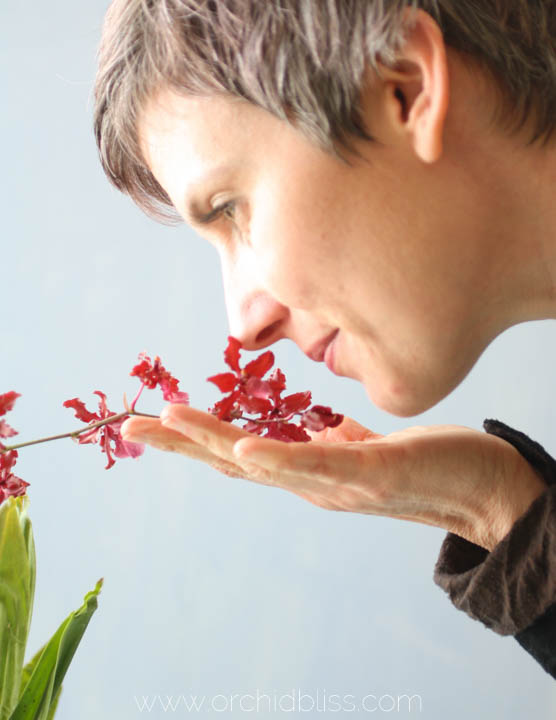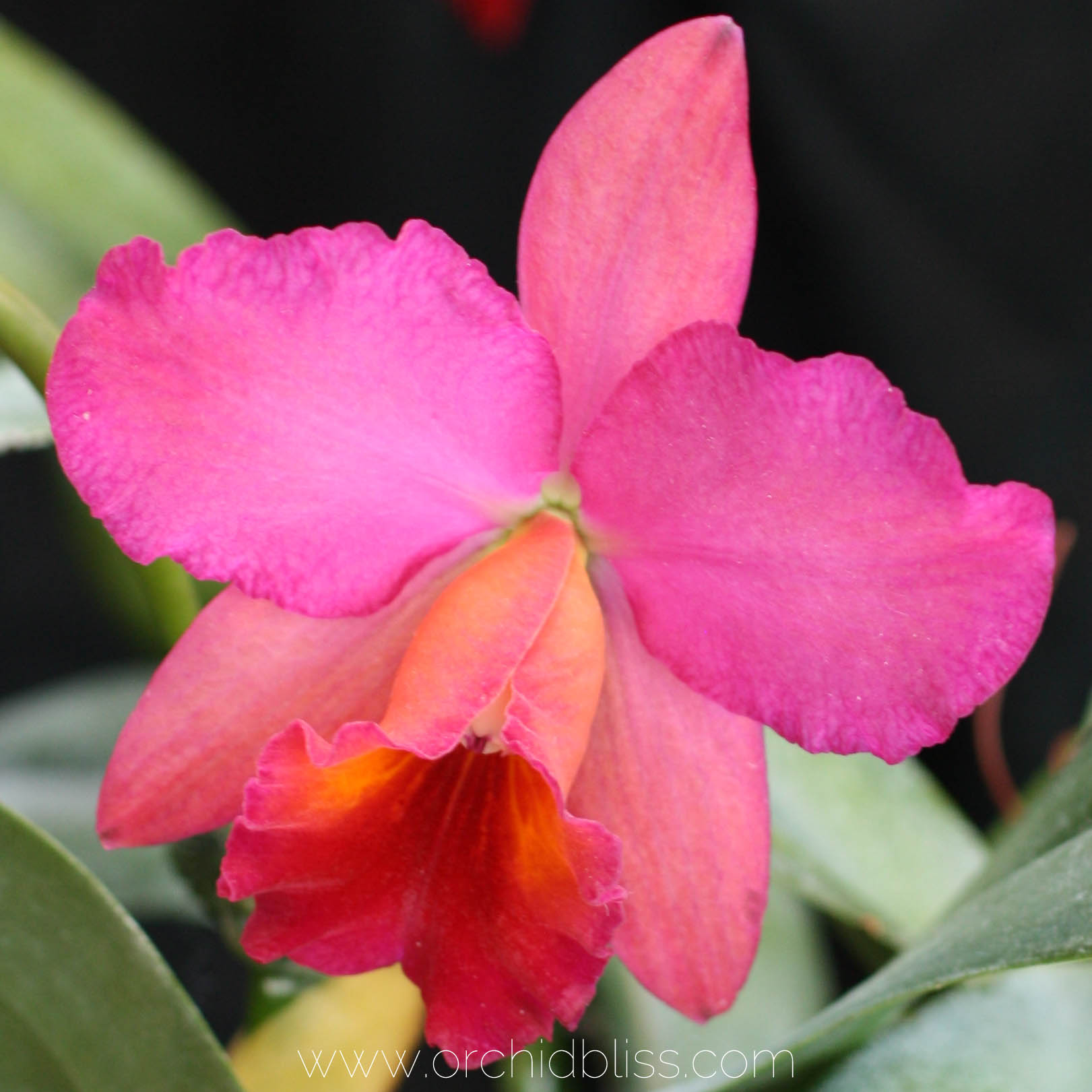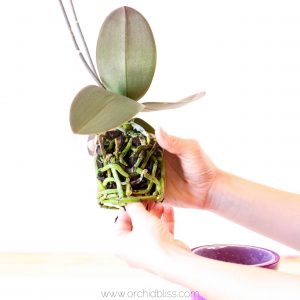Care Requirements Right Here
Oncidiums are an excellent choice for beginner orchid growers for at least two reasons. First, many oncidiums do well on the windowsill. Second, oncidiums can grow even better at home than in a greenhouse since humidity levels are lower.
Oncidiums are orchids definitely worth growing and I’m confident you’ll be able to master their care needs. To begin, we’ll tackle temperature and light for dependable blooming. Next, I’ll show you what you need to do for regular care, watering, fertilizing, potting, and so on, for robust, oncidium orchids.
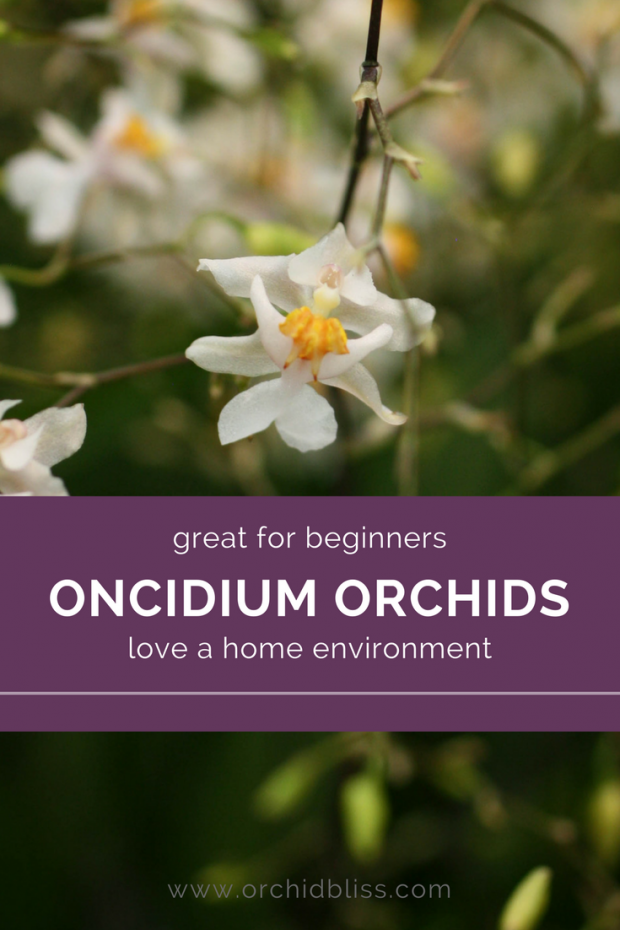
Some of the links on this page may be affiliate links. Click here to learn more.
Why You Should Grow Oncidium Orchids
Originally from South America and Mexico, but now growing commonly in Asia, oncidiums are widely propagated and hybridized making them an ideal choice for the beginner orchid grower. Nicknamed dancing ladies because the oncidium’s large flower petal brings to mind full yellow skirts – especially when fluttering in a light breeze. However, not all oncidiums sport the yellow skirt.
The Oncidium genus encompasses several hundred species and can be hybridized with genera such as Brassia and Miltonia resulting in a broad range of intergeneric orchids. In turn, these orchids have been hybridized to include an even greater variety of delightful colors, shapes, and sizes. Many oncidiums and their hybrids are well-suited to the novice orchid enthusiast.
1-Encouraging an Oncidium to Flower
Oncidiums can put forth an amazing profusion of flowers. There are two main things your oncidium needs to bloom properly: enough light and the right temperature.
GIVING ONCIDIUMS THE RIGHT LIGHT
Oncidiums appreciate bright, indirect light (2000-4000 fc). If you are also growing Phalaenopsis alongside an Oncidium, keep in mind that the Oncidium is a medium-light orchid, while your Phal is a low-light orchid. Place your Oncidium a bit closer to the window than you would a Phal.
Grow your oncidium in a bright east, south, or west-facing window. If you’re going for the best odds, the ideal location for oncidium orchids that results in the most abundant flowers is a bright east-facing window that receives a couple of hours of the morning sun.
Alternatively, if you don’t have enough natural light, consider using artificial lights. Artificial lights can have spectacular results and are much less intimidating than you might think. If you’d like to learn more about artificial lights, CLICK HERE.
THE RIGHT TEMPERATURE TO BLOOM ONCIDIUMS
The moderate temperature requirements of oncidiums are the primary reason they are an easy-to-grow orchid.
To promote reblooming, Oncidiums appreciate intermediate to warm temperatures (up to 90 F / 32 C in the summer with lows between 58 to 62 F / 14.4 – 17 C. Provide temperatures in the 50s and 60s F / 10-16 C in the winter). Optimally, provide your oncidium with a 10 temperature drop at night, warming up during the day.
WHEN TO EXPECT FLOWER SPIKES
In addition to providing your oncidiums with proper light and temperature, it is also helpful to know that many oncidiums will begin to develop flower spikes in the summer. Though this is not a hard and fast rule. As I write this, it is springtime and I have an oncidium in flower. Even so, it is useful to know when generally to expect flowers.
FLOWER SPIKE AFTERCARE
Oncidium flower spikes can produce many flowers. In fact, you may be surprised by the seemingly relentless flower spikes that emerge, one after another. After blooming, the flowers will wither, turn brown and begin to drop. Next, the flower spikes will dry up and turn brown. It is a good idea to remove spent flower spikes with a sterilized tool, such as pruning shears. Disposing of old flower spikes will keep your orchid neat and tidy – helping to prevent the spread of pests and disease.
To help you further, start by downloading my free cheat sheet to see where to cut the orchid flower spike after blooms have faded to trigger re-blooming. Click here for the cheat sheet. It’ll be super helpful.
2-Humidity Requirements for Oncidiums – How to Prevent Accordion Leaves
If you own both an Oncidium and a Phalaenopsis, one of the first things you probably observed was how different their leaves are. Phalaenopsis leaves are much thicker than that of Oncidium leaves.
If the leaves on your Oncidium look pleated one cause may be lack of humidity, or it may just be a poor cultivar. Oncidiums like humidity levels between 40-80%. For home growers, keep humidity levels between 40-50% as higher levels promote mold growth on the walls of your house.
To prevent pleated leaves, in addition to boosting humidity levels, increasing watering frequency will prevent dehydration that causes accordion leaves. Be sure that the potting mix is open and well-draining to prevent root rot.
3-The Importance of Good Air Movement
You may also notice dark spotting on the leaves. These black or brown spots are likely caused by bacteria. Do not be alarmed; while spotting isn’t good, it is fairly normal for Oncidium orchids. Increasing air circulation with a fan pointed away from your orchids will help alleviate the spotting.
4-How to Water Oncidiums
When watering, water copiously, letting the water flow through the potting mix. After watering, allow the potting mix to dry between watering. As stated above, Oncidiums are prone to spots on their leaves. In addition to good airflow, taking care to keep water off the leaves when watering may also help to prevent leaf spots.
WATER WITH HYGIENE IN MIND
While it may be tempting to dunk one orchid pot after another into the same bucket this practice is not hygienic and can spread pests and disease. It’s much more sanitary to allow fresh water from the faucet or from a watering can to flow through the potting mix.
USE NEW PSEUDOBULBS AS A WATERING GAUGE
When your oncidiums are growing new leaves, roots, and pseudobulbs, keep an eye on the new pseudobulbs. After new pseudobulbs mature and are fat, full, and smooth, reduce watering slightly by extending the time between watering to allow the potting mix to dry out slightly between watering. This shift in watering will result in more flowers and a longer-lasting potting mix.

5-Fertilizer – the Companion to Watering
As these orchids do not require a winter rest, continue to water and fertilize year-round. Watch the leaf tips for any signs of browning which indicates fertilizer burn. Regularly flush salts from the potting mix with fresh, clean water.
CHOOSE THE RIGHT FERTILIZER
Use a high nitrogen fertilizer (9-3-6) liquid fertilizer every other week if your orchid is potted in bark. Those potted in other media should use a balanced fertilizer. Fertilizer should always be diluted to ½ to ¼ strength.
NOTE: Always use a balanced fertilizer for equitant-type oncidiums. These twig epiphytes will burn if high nitrogen fertilizers are used.
6-Understanding the Oncidium Growth Habit
Unlike Phalaenopsis and vanda orchids, Oncidiums are sympodial. This means that they grow from a rhizome rather than a single stem. Another difference is that they have pseudobulbs where they store water. These pseudobulbs should be firm and smooth.
While in active growth, meaning you can see roots and leaves growing, keep the orchid well watered. When not in active growth allow the Oncidium to dry out a bit between watering. This is a bit of a different watering approach than watering a Phal. Because phalaenopsis orchids don’t have water storage they should never completely dry out.
7-Best Potting Media for Oncidiums
Oncidiums are finely-rooted orchids. Use a potting mix that allows water to flow freely through the mix and provides air to the roots.
Many Oncidiums are tightly packed in potting material that does not promote long-term health. The potting mix that I use and trust is by rePotme. This mix is made primarily of Fir bark and supplemented with horticulture charcoal and perlite to allow optimum airflow to the orchid’s roots.
HOW TO ADD EXTRA MOISTURE IF YOU LIVE IN AN ARID CLIMATE
Adding a few cubes of wool rock to the potting mix will provide the open potting mix with extra water retention while keeping the mix from getting soggy. Like most orchids, for a vigorous root system, good drainage is a must.
8-How to Know that an Oncidium Needs Repotting
To know if your oncidium needs to be re-potted, just take a look at the roots. If the potting media is fresh and has not decomposed or absorbed high amounts of fertilizer salts, new roots will grow down into the potting media. On the other hand, if new roots tend to grow out of the potting mix and down the side of the potting mix, it is time to re-pot.
9-Four Things to Consider When Choosing an Oncidium
Oncidiums are a large and diverse species of orchid. With over 600 varieties. This means that when you take oncidiums as a whole it is difficult to generalize about their care.
1-POPULARITY AND AVAILABILITY COUNTS
To make oncidium care easier, and more specific, concentrate on the most popular – and therefore, the most widely available oncidiums. These oncidiums are the yellow-flowered ‘dancing lady’ types.
2-SELECT WARM-INTERMEDIATE GROWERS
As noted above, there are many, many varieties of oncidiums. To simplify your oncidium’s care requirements and increase the chance of success, choose an oncidium with moderate temperature requirements. Just ask the seller if the orchid is a warm to intermediate grower. It is difficult for most of us to achieve the cooler temperatures required by cool-growing oncidiums.
Simply put, it’s much easier to grow oncidiums that thrive in warmer temperatures up to 90 F / 32 C in the summer and prefer temperatures in the 60s-50s F / 10-16 C in the winter.
3-CHOOSE A MATURE – OR BLOOMING-SIZED ONCIDIUM
If you’d like flowers within a year, ask the seller for an oncidium that is blooming size. Otherwise, it may take at least a year or two before you see a flower spike.
4-REWARDING ORCHIDS COME IN SMALL SIZES
The size of the plant does not necessarily indicate that the orchid is large enough to bloom. Some oncidiums are very, very small. The ‘equitant type’ oncidiums grow in a 2” pot or are mounted. The flower is large in comparison to the tiny plant and can bloom multiple times a year.
Another small oncidium is ‘twinkle.’ This orchid comes in a variety of colors including white, yellow, and red. The flowers are tiny but profuse – like tiny lights in a night sky. Not only does ‘twinkle’ teem with flowers, but it also has a wonderful vanilla fragrance.
10-Looking for a Fragrant Orchid?
One notable difference between Phalaenopsis and Oncidiums is that several Oncidium varieties have a delightful fragrance. Sharry Baby is known for its chocolate-like aroma. Twinkle is another variety with a lovely vanilla-ish scent. Another popular fragrant orchid is the miniature Oncidium ‘cheirophorum’ which incidentally, is a parent of ‘twinkle.’ If you love the smell of citrus, try the oncidium ‘chrysomorphum.’
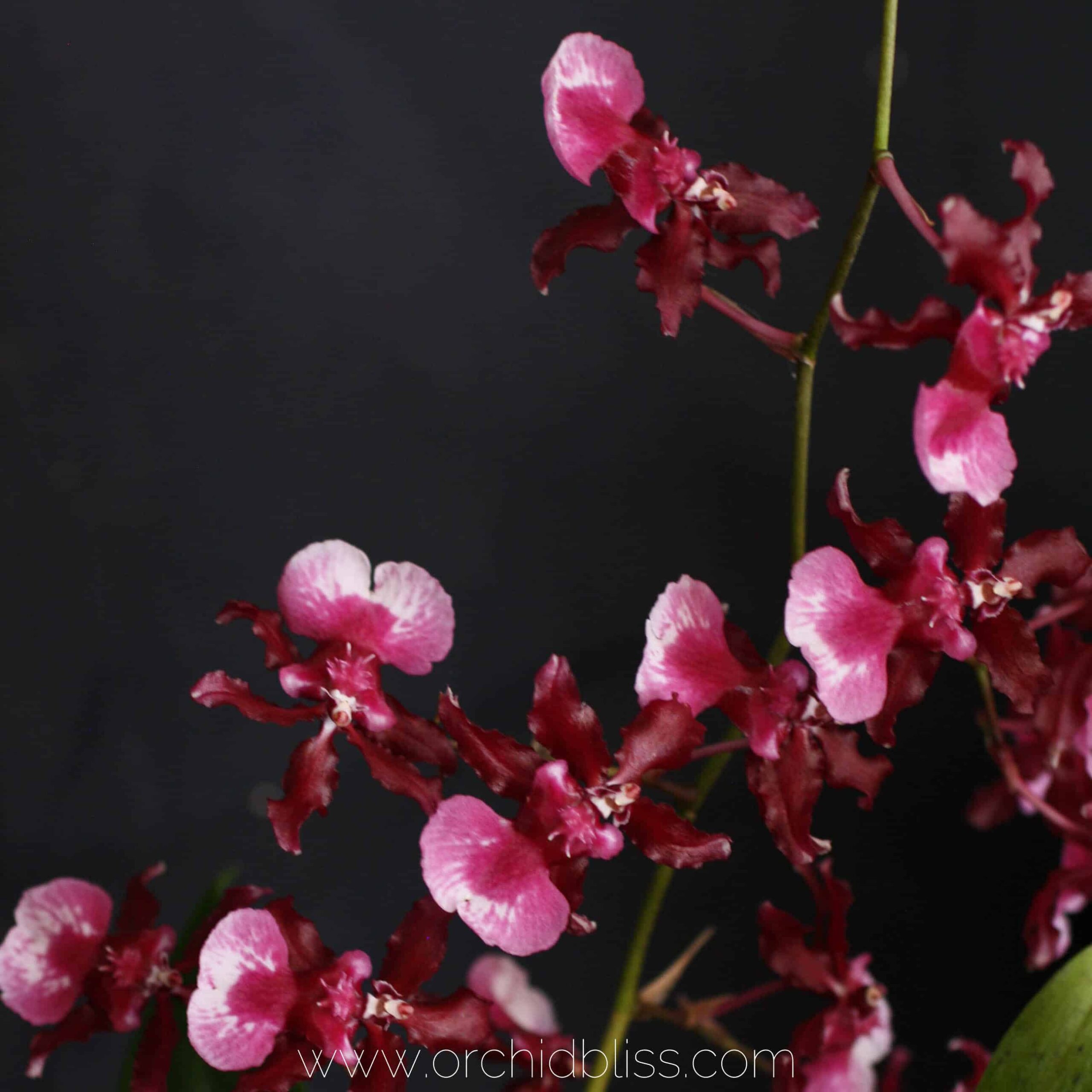
11-Protect Your Oncidium From Pests
The best way to protect your orchid from pests and disease is by giving regular checkups.
- Aphids like to feast on new growth. In the spring, when new growth is most apparent, inspect new pseudobulbs, flower spikes, and buds. Treat aphids by spraying off with soapy water.
- Spider mites can become a problem when it is hot and dry. Keeping humidity levels up to around 40-50% will help keep these pests at bay. Spraying off leaves with water, and providing good air movement around oncidiums will keep away spider mites.
12-Enjoy Oncidiums at Home
Oncidium orchid varieties do well in a home environment. If you’re used to growing Phalaenopsis orchids, remember that Oncidiums prefer more light and have pseudobulbs, making them more drought-tolerant than the Phalaenopsis. And, if that’s not enough, many oncidiums have a delightful fragrance.
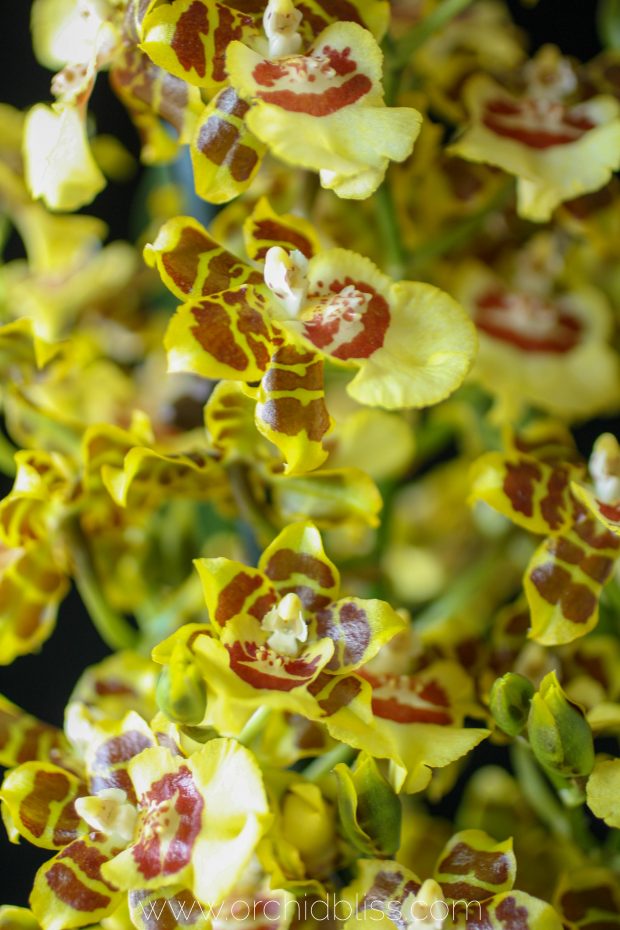
13-Recommended Oncidiums
Open-minded about trying a new orchid variety? If you are, begin with an Oncidium. These orchids do well on a windowsill, and many have a delightful fragrance.
| Oncidium Orchids and Oncidium Intergenerics |
| 1. Oncidium ‘sharry baby’ – chocolate fragrance 2. Oncidium ‘twinkle’ – vanilla fragrance 3. Oncidium ‘cheirophorum’ – floral fragrance 4. Oncidium ‘chrysomorphum’ – citrus fragrance 5. Oncidium ‘leucochilum’ 6. Oncidium ‘longipes’ 7. Oncidium ‘ornithorhynchum’ 8. Oncidium ‘sphacelatum’ 9. Oncostele ‘wildcat’ 10. Odontocidium Tiger Crow ‘golden girl’ |
| Oncidiums recommendations from Bruce Rogers, The Orchid Whisperer; William Cullina, Understanding Orchids; and Marc Hachadourian, Orchid Modern |
14-Get Your Free Oncidium Care Card
For easy care instructions on how to care for oncidium orchids, CLICK HERE. You’ll get a PDF downloadable culture sheet with care requirements for oncidium orchids.
